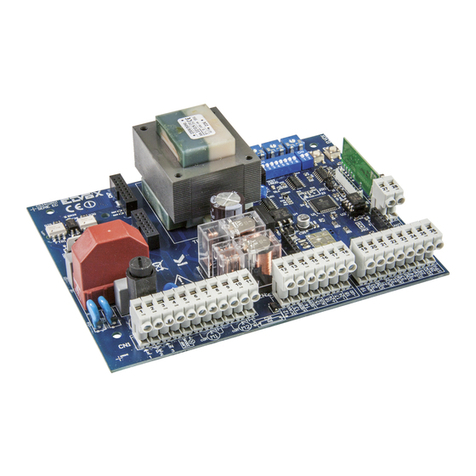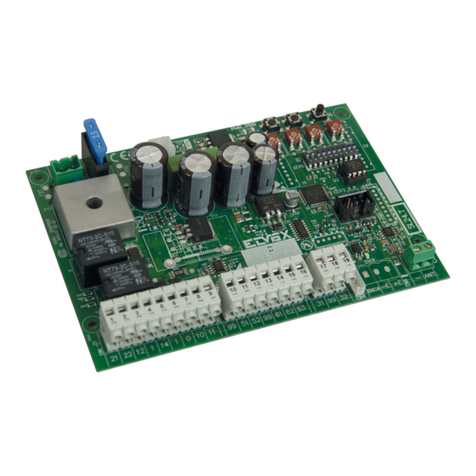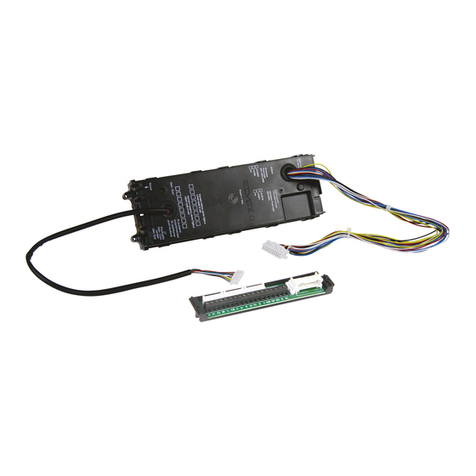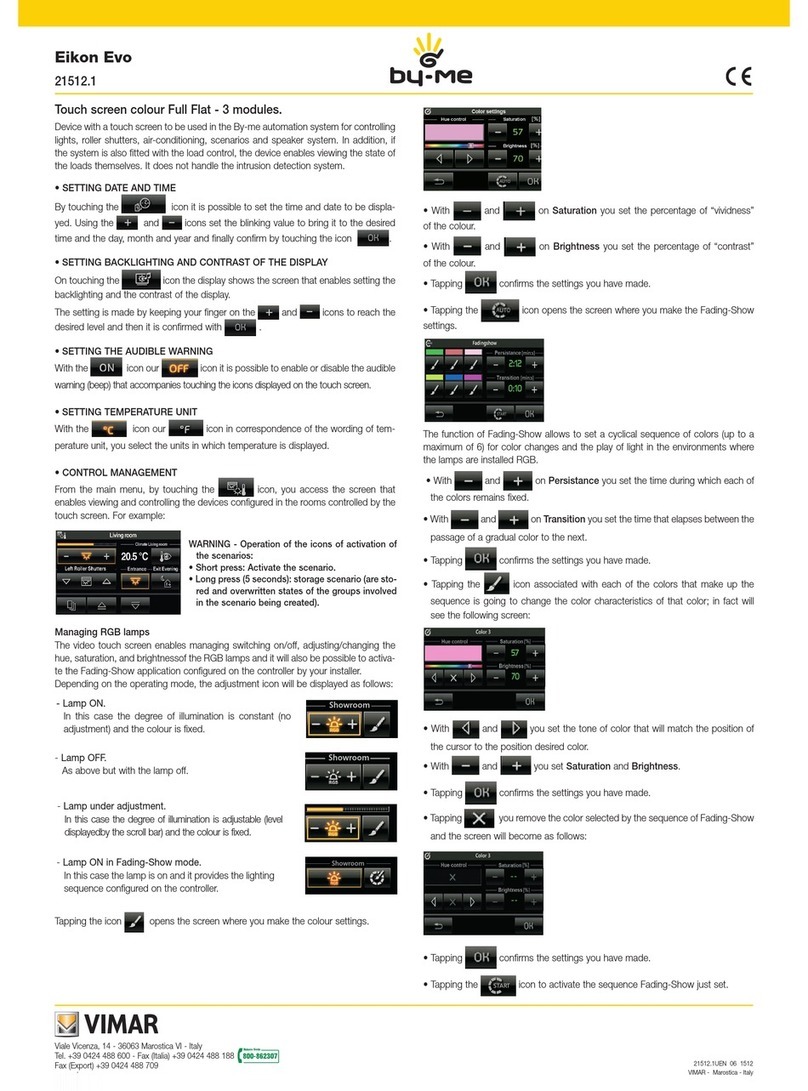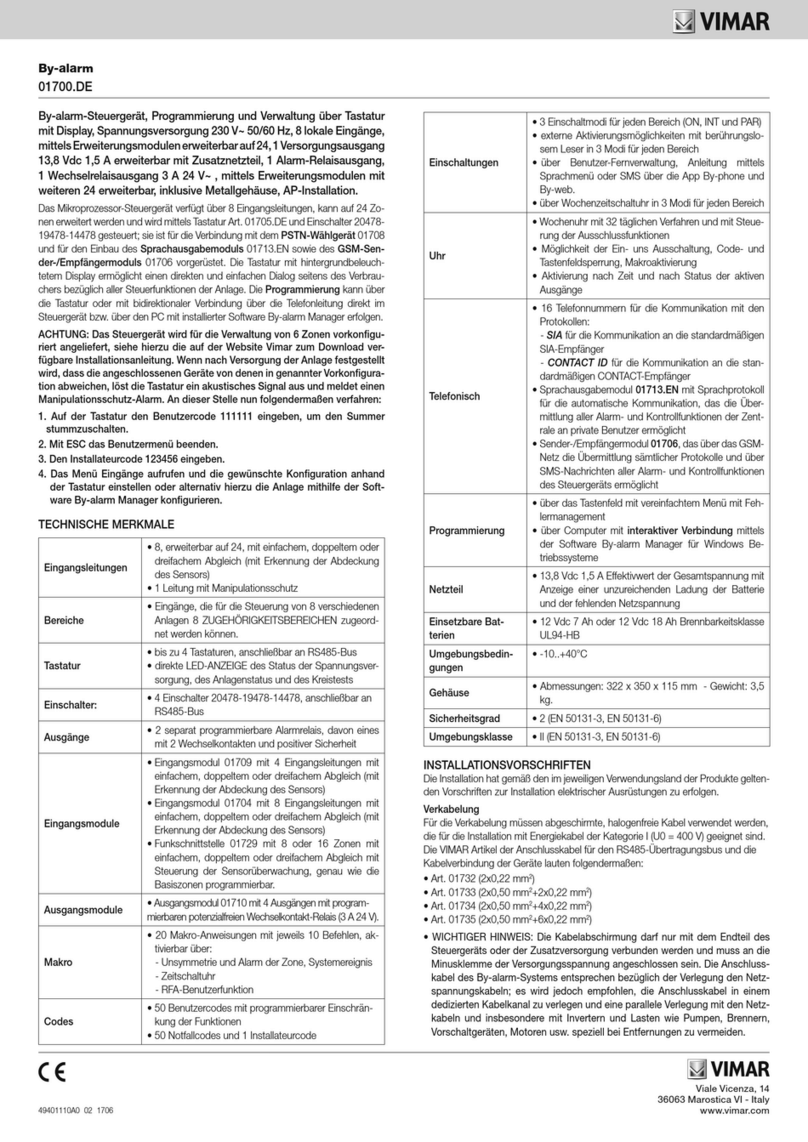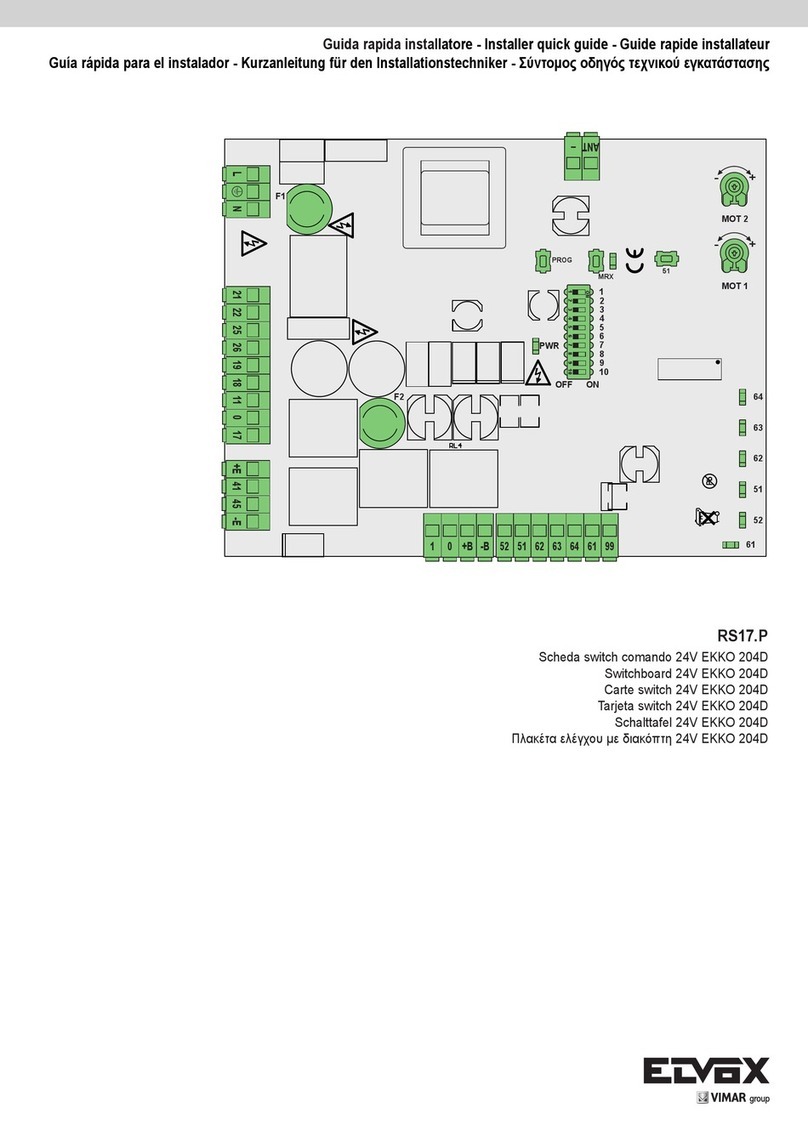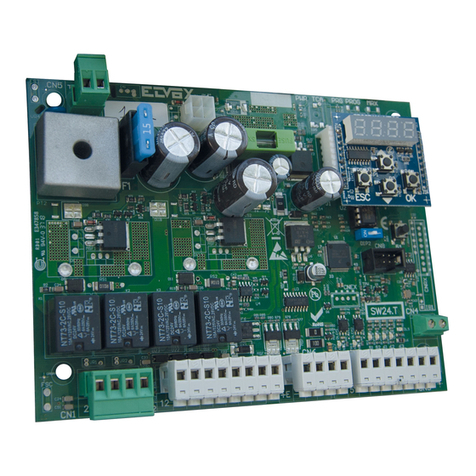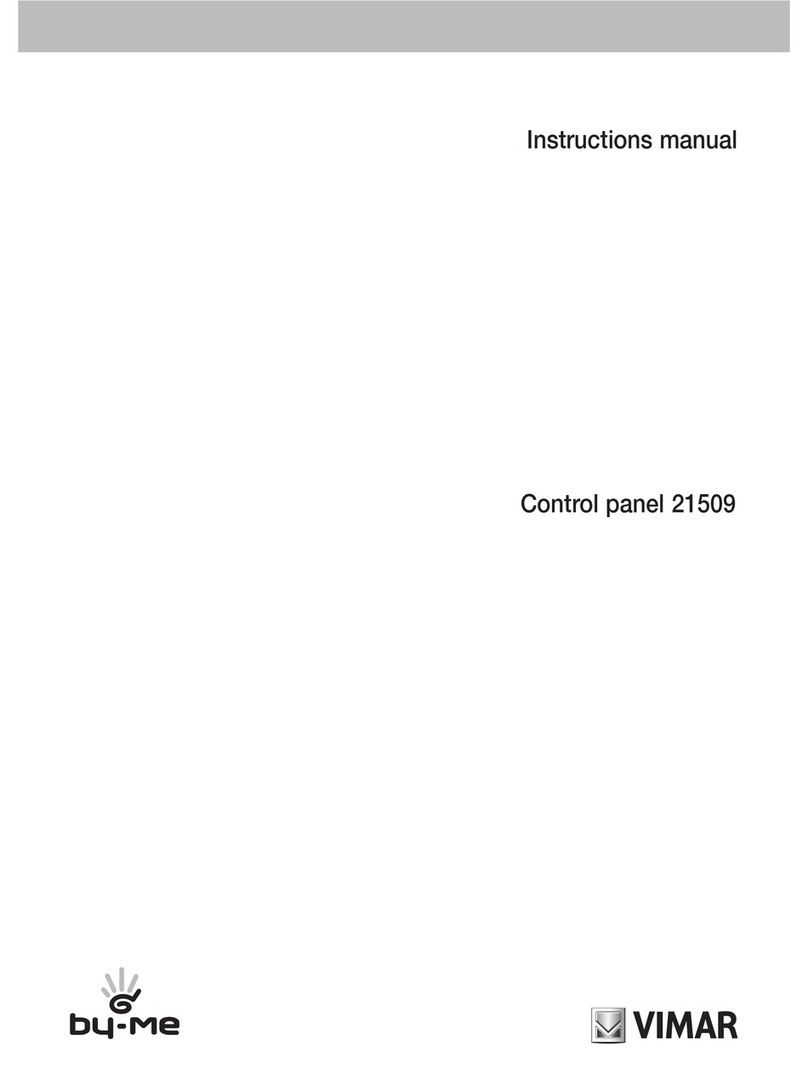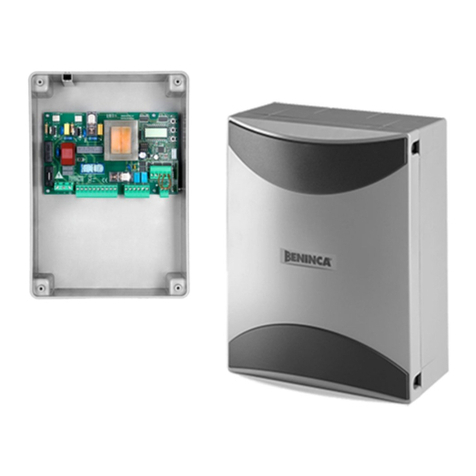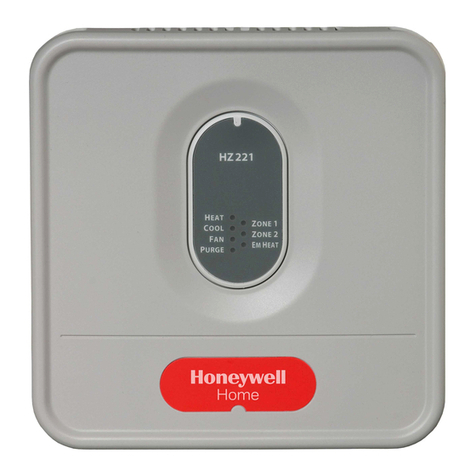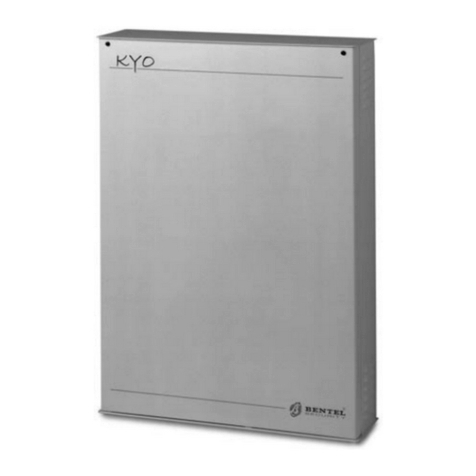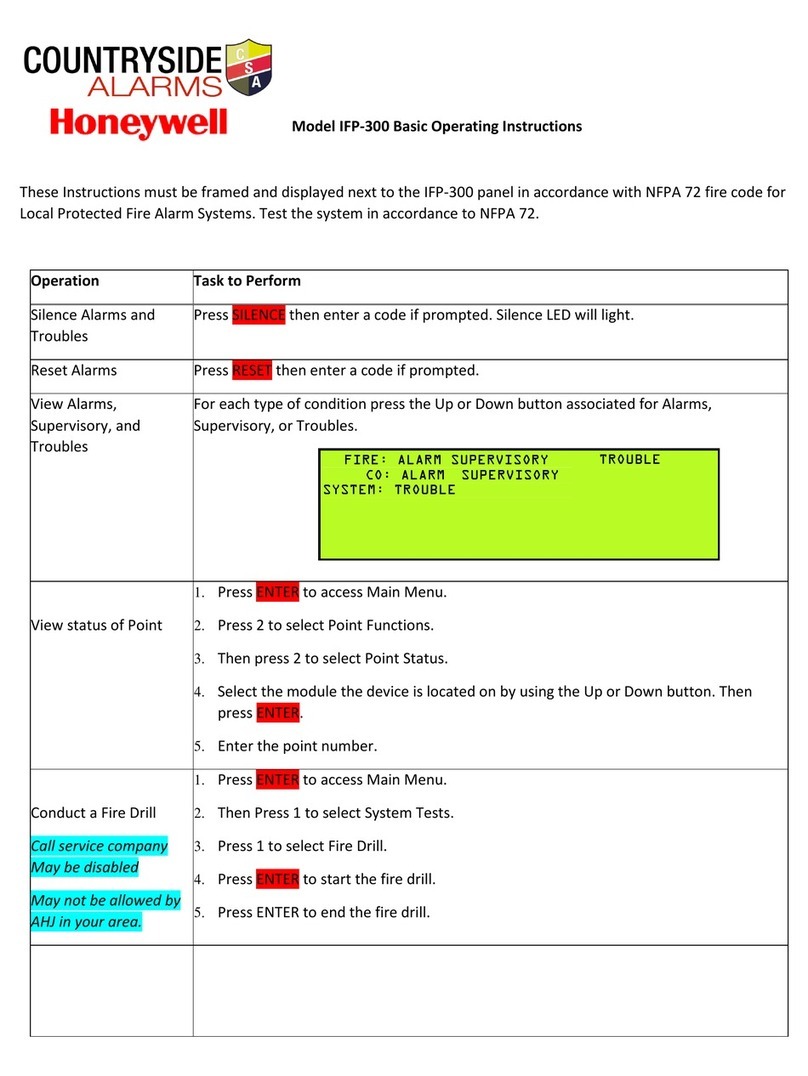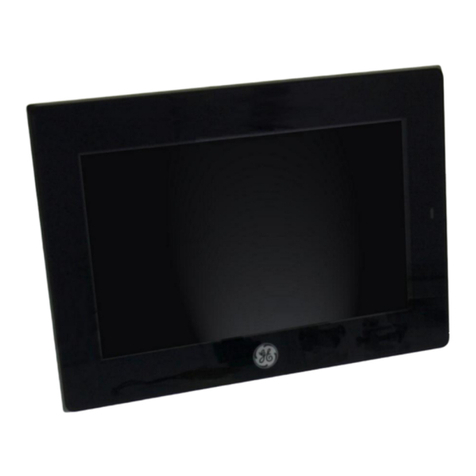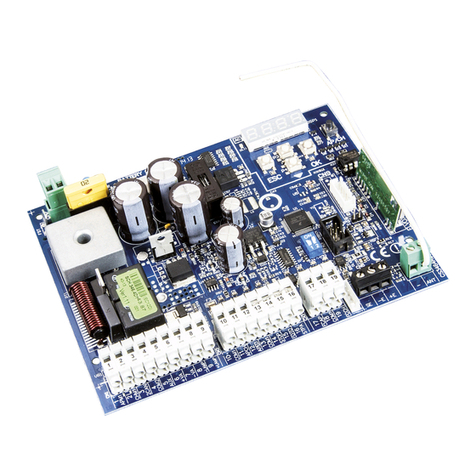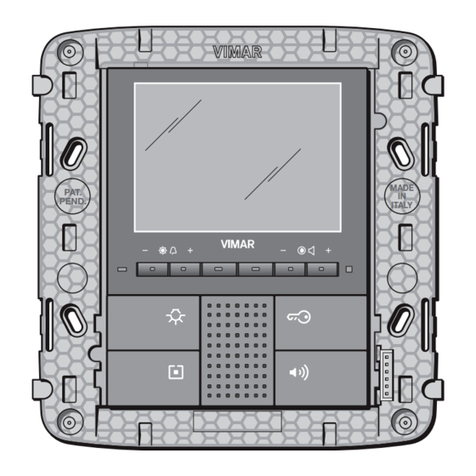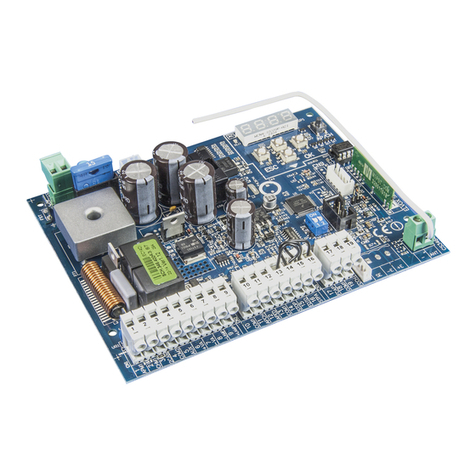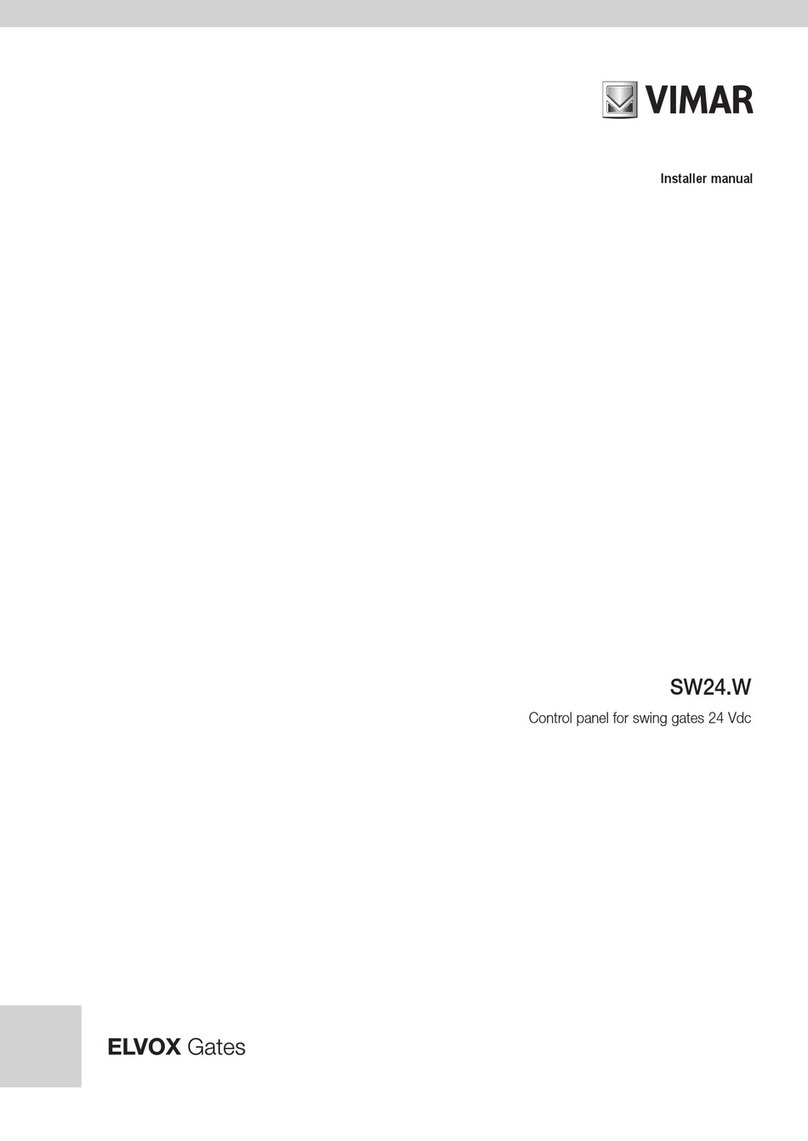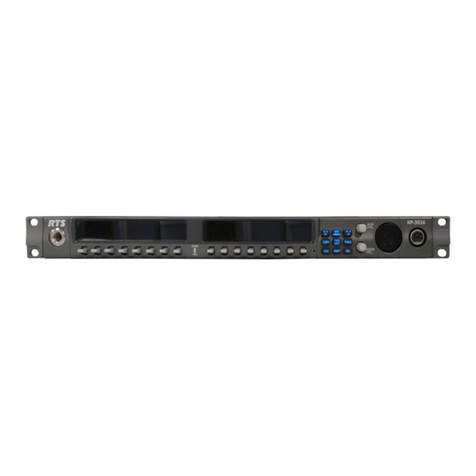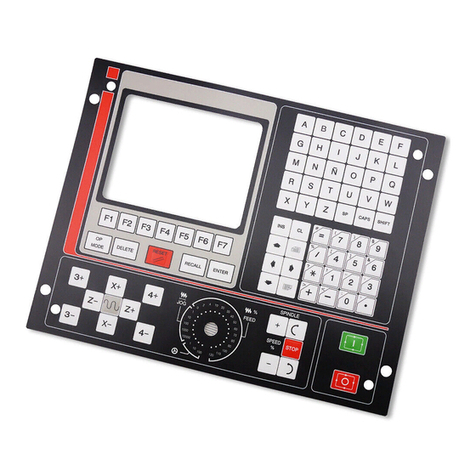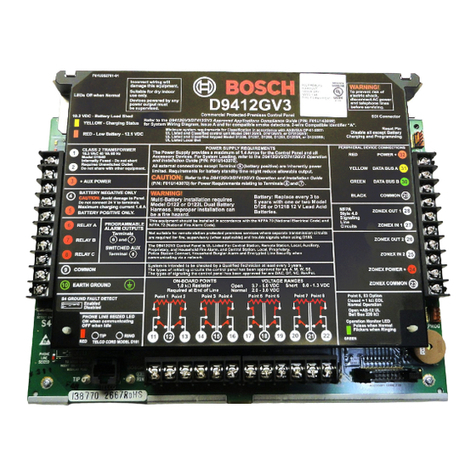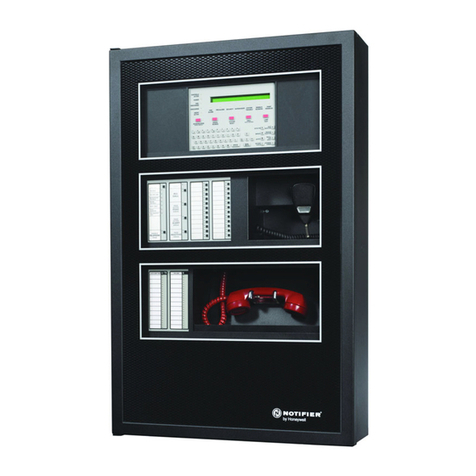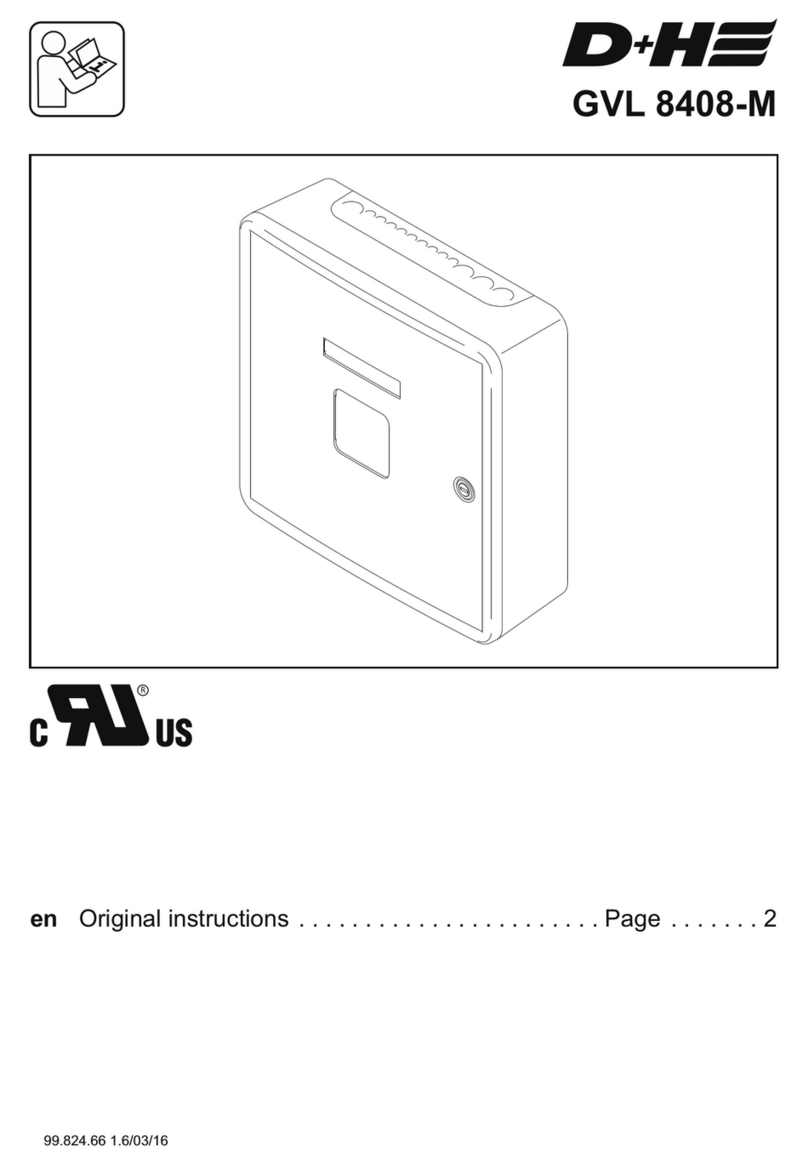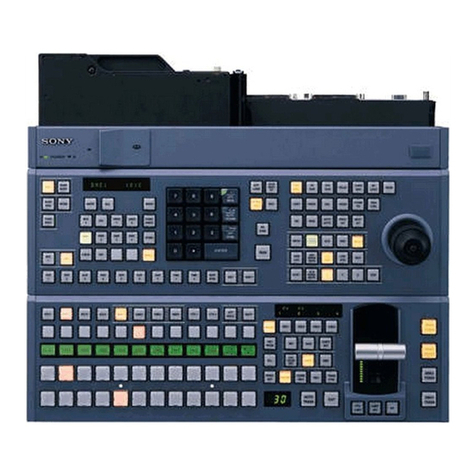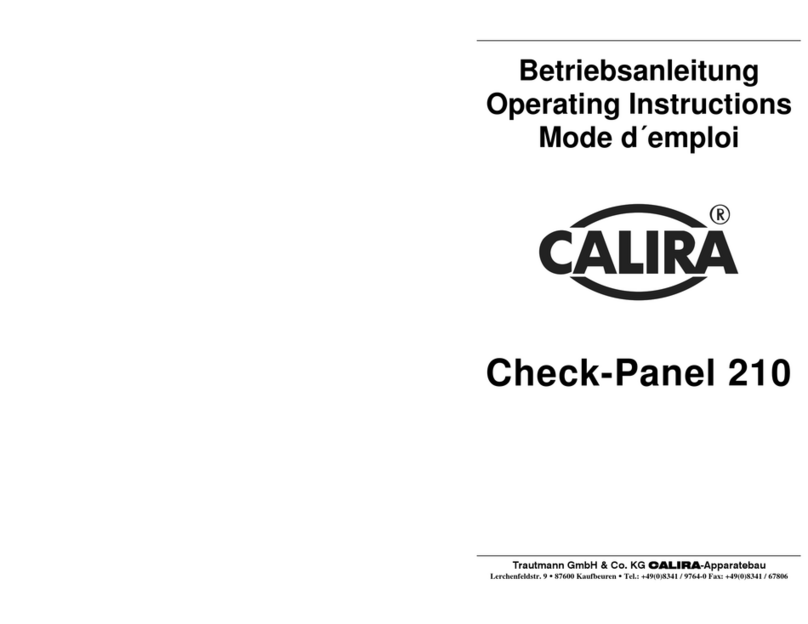
6
By-alarm
The inputs are expandable up to 24 using the input expansion modules (art. 01709 and 01704) or via the radio frequency interface (art. 01729) to be connected to the
RS485 bus of the control unit.
The freely programmable outputs are expandable up to 24 using the output expansion module (art. 01710) to be connected to the RS485 bus of the control unit.
When conguring, each bus device must be assigned an ID address; these addresses must be assigned sequentially for each device category, ie:
• Keypads 01705 -> ID= from 1 to n
• Connectors 20478-19478-14478 -> ID= from 1 to n
• 4-input expansion modules 01709, 8-input expansion modules 01704 and radio frequency interfaces 01729 -> ID = from 1 to n
The 4-input expansion modules, 8-input expansion modules 01704 and the radio frequency interface belong to the products for input expansion and so the ad-
dresses assigned to the devices of this type connected on the RS485 bus must be sequential and correlated (for full details see par. 7.3).
• 4-output expansion modules 01710 -> ID = from 1 to n
During configuration, you must assign ID=1 to the first device in each category and then continuing sequentially.
Example of addressing a system with control unit 01700:
■2 keypads 01705 -> ID keypad 1=1, ID keypad 2=2.
■3 connectors 20478-19478-14478 -> ID connector 1=1, ID connector 2=2, ID connector 3=3.
■1 4-input expansion module 01709 -> ID=1.
■1 radio interface 01729 configured with 8 inputs -> ID=2.
■1 4-output expansion module 01710 -> ID=1.
Addressing is also performed with the By-alarm Manager software via the Devices menu by selecting the appropriate device category.
1.2 System logic
Area:
The Area is a set of zones (detectors) of the system.
The control unit can manage up to 8 different areas.
Within each area, 3 connection modes (partitioning) are then defined: ON, INT and PAR.
The zones belonging to the area are thus assigned to one or more connection modes.
The system allows a given area to be connected in one (and only one) of the ON, INT or PAR modes; once an area is connected using one of these
modes, it can only be disconnected.
Example:
Suppose you have a system consisting of a few zones of outdoor detectors (e.g. volumetric detectors for the garden), some zones with perimeter detectors (such
as contacts for windows/roller shutters) and finally a day zone and a night zone with indoor volumetric detectors (e.g. dual technology detectors (art. 20479-
19479-14479)).
You define a single area (in this case it can be considered as the system itself) with the three connection modes:
• ON = all zones (total connection)
• INT = zones with outdoor detectors and perimeter detectors
• PAR = zones with outdoor detectors, perimeter and volumetric detectors for the day zone.
When leaving home you put the area into ON mode (total connection).
When you are at home and you want to protect the outdoor setting you put the area into INT mode (outdoor and perimeter detectors).
When it's bedtime you put the area into PAR mode so as to be able to move about freely in the night zone while the external, perimeter and volumetric detectors of
the day zone are all active.
In each case, when the area is connected using any mode, it can only be totally disconnected.
The control unit lines can also be programmed as external arming inputs, both total and partial. The control unit accepts "pulse" commands, that affect the control
unit both as regards external arming performed by unbalancing the lines programmed as arming inputs and for those performed by the weekly scheduler inte-
grated in the control unit.
Pulse command.
Momentary unbalancing of a programmed line in one of the arming modes will cause the control unit to switch on; a subsequent momentary unbalancing will bring
it back into the OFF state. With this type of command you can control switching on from various points (for example: switch on with the keypad and off with an
external command or the scheduler) independently.
In this way any external switch-on command can be used, such as card readers or radio transmitters that will need to have the same level of performance as the
control unit and need to be installed with the decoding board inside the control unit enclosure.
By appropriately programming the active outputs, you can control external circuit test signals indicating the bypassed zone and system armed signals indicating an
alarm.
User management:
Each user is recognised by the system through a 4 to 6 digit PIN set during the system installation phase.
You can accurately define the operations that can be carried out by each user (for example ON/INT/PAR connection, disconnection) and the areas in which actions
can be performed. A zone can belong to more than one area.
The possibility to create several areas, by defining the connection mode (flexible with respect to the zones), and the timely management of user rights make for an
extremely flexible system.
Several areas can in fact be used to:
- Manage parts of the system separately using one single control unit; you can configure 2 areas with different zones and define the users who can control any
given area.
- Increase the connection modes: more than one area can be defined with the same zones (or zone subsets) and with different connection modes; this increases
the total connection modes that are available and that can therefore be linked to the various users.
By-alarm burglar alarm system




















